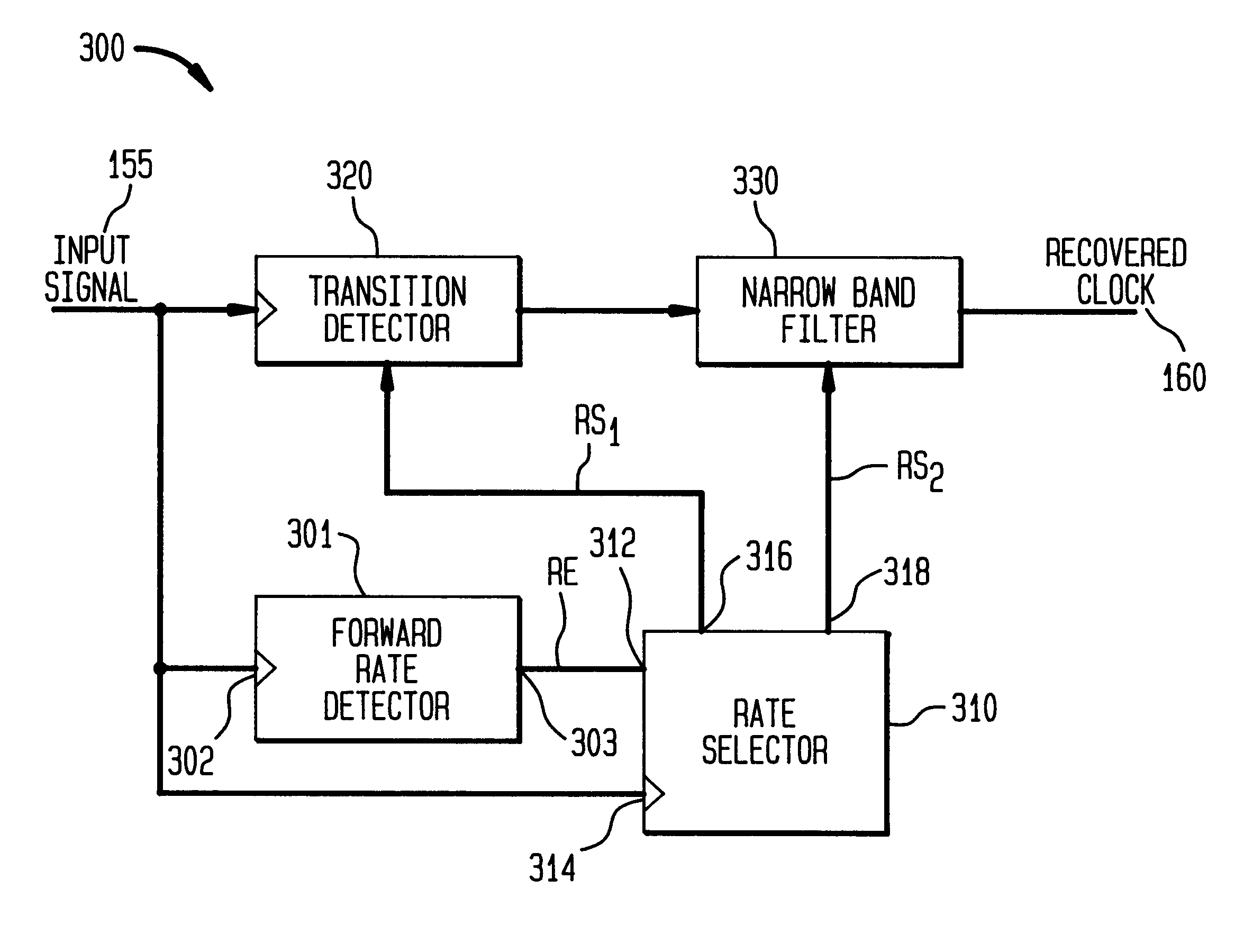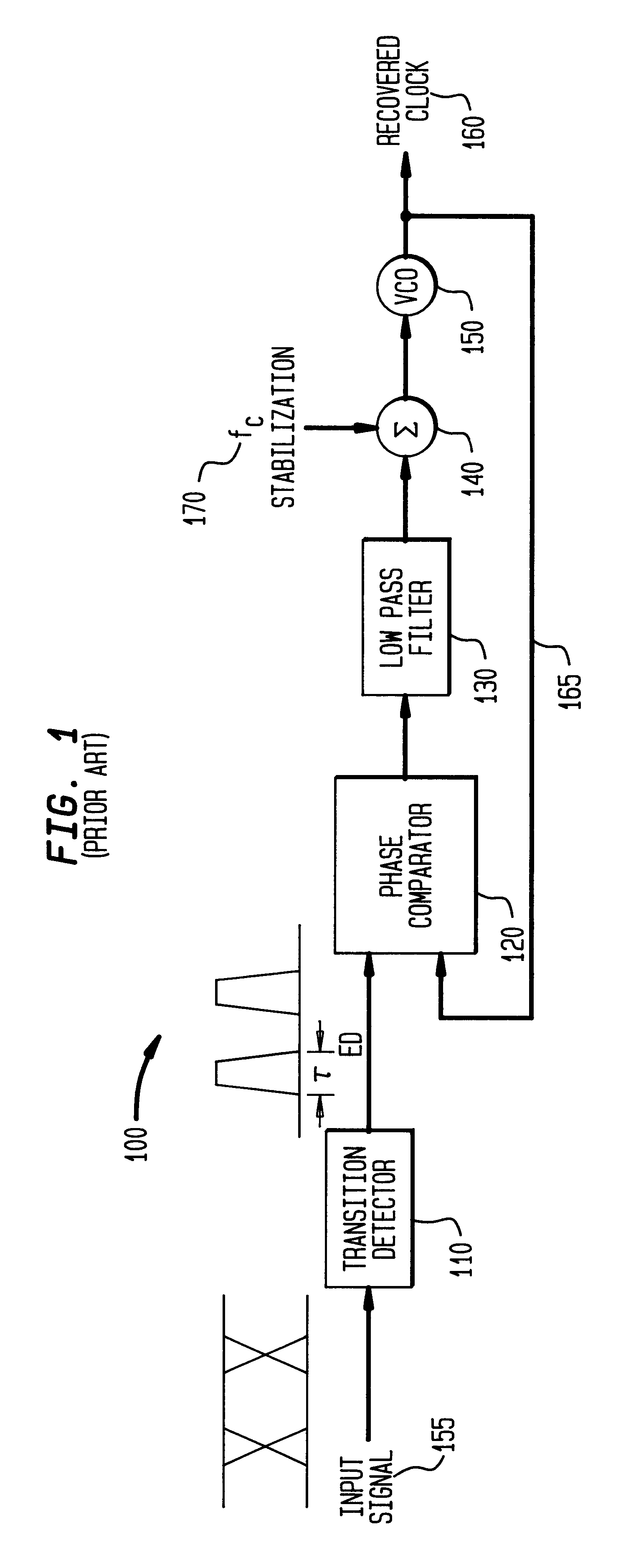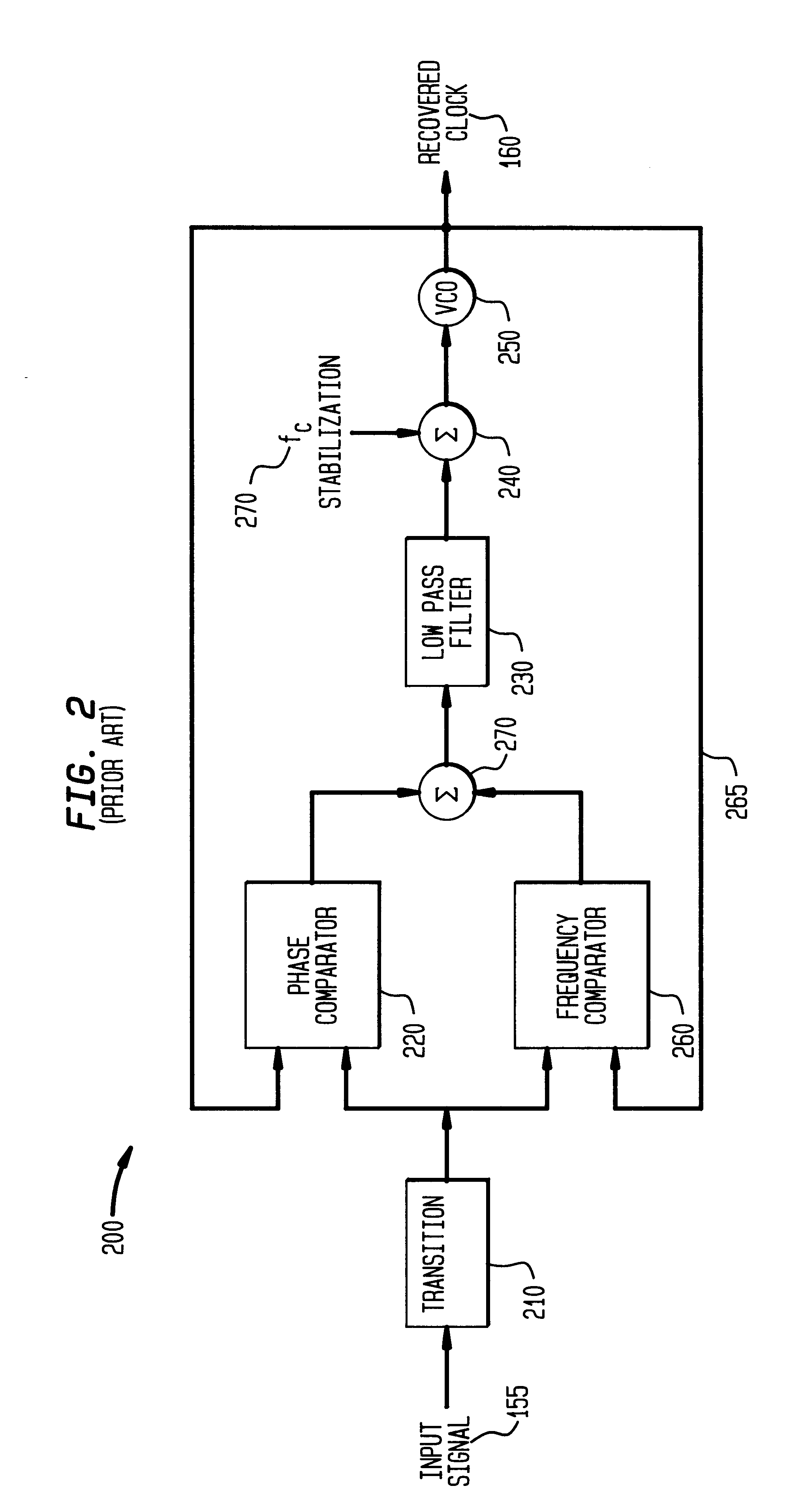Method and apparatus for variable bit rate clock recovery
a timing clock and variable bit rate technology, applied in the field of communication network timing clock recovery, can solve the problems of unacceptable link error rate and unexpected network failure, too slow and/or lack of accuracy for variable bit rate applications,
- Summary
- Abstract
- Description
- Claims
- Application Information
AI Technical Summary
Problems solved by technology
Method used
Image
Examples
first embodiment
In the first embodiment, time interval generator 810 includes one or more resettable edge triggered delay elements, for example delay elements 510.sub.1 -510.sub.N shown in FIG. 5. As shown in FIG. 9b, in this embodiment, time interval generator 810 generates at output 814 a pulse, which starts after .tau. time has elapsed and is reset by the next transition in input signal 155.
second embodiment
In the second embodiment, time interval generator includes an edge triggered one-shot, which is described below in detail. As shown in FIG. 9c, in this embodiment, time interval generator 810 generates at output 814 a single pulse starting at time .DELTA.t=0, which has duration .tau..
In both embodiments, if time .tau. is set shorter than .tau..sub.bit, as indicated by F, the next transition in input signal 155 occurs at .DELTA.t=.tau..sub.bit after .tau. time has elapsed, and output 826 is set to a low state. If time .tau. is set to a longer duration than .tau..sub.bit, as indicated by S, a subsequent transition in input signal 155 at .DELTA.t=.tau..sub.bit, occurs before .tau. time has elapsed, and output 826 is set to a high state.
There is perfect alignment between the pulse generated at output 814 of time interval generator 810 and input signal 155 when .tau.=.tau..sub.bit, as indicated by A, and a transition in input signal 155 that occurs at .tau..sub.bit overlaps with .tau.. O...
PUM
 Login to View More
Login to View More Abstract
Description
Claims
Application Information
 Login to View More
Login to View More - R&D
- Intellectual Property
- Life Sciences
- Materials
- Tech Scout
- Unparalleled Data Quality
- Higher Quality Content
- 60% Fewer Hallucinations
Browse by: Latest US Patents, China's latest patents, Technical Efficacy Thesaurus, Application Domain, Technology Topic, Popular Technical Reports.
© 2025 PatSnap. All rights reserved.Legal|Privacy policy|Modern Slavery Act Transparency Statement|Sitemap|About US| Contact US: help@patsnap.com



